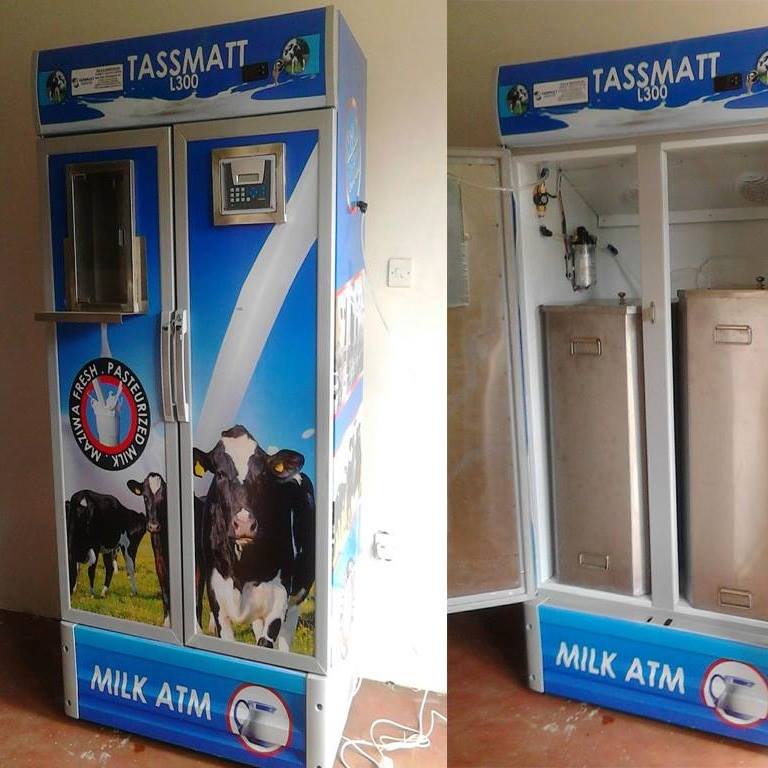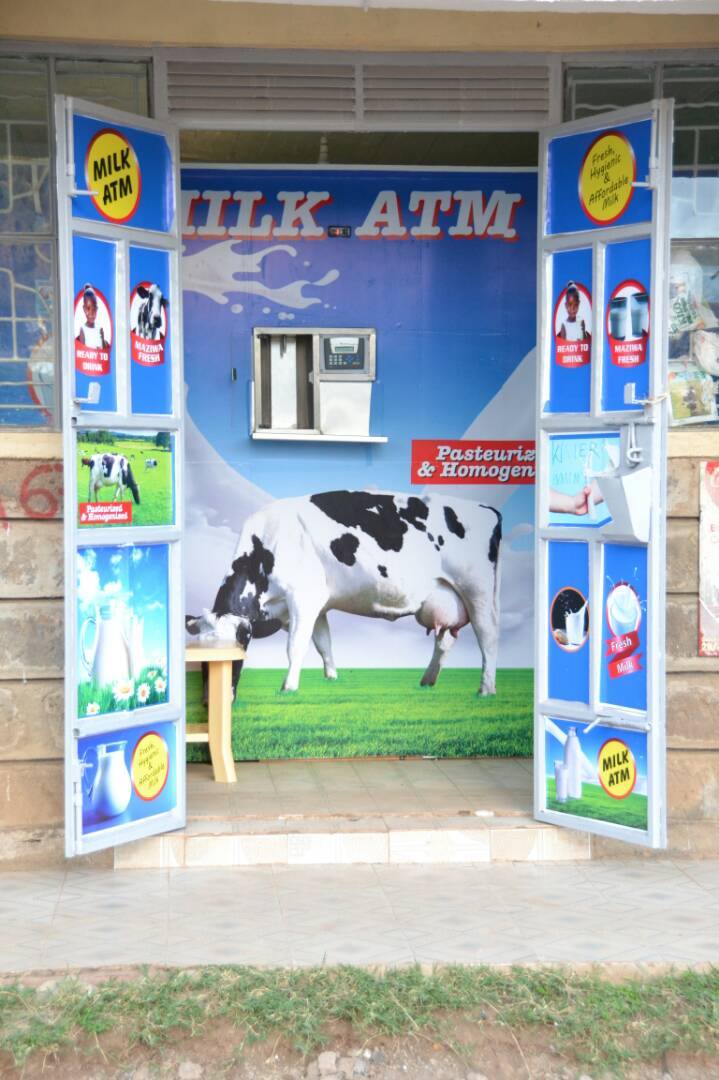Keeping Your Milk ATM Flowing: How to Care for and Maintain Your Milk ATM Machine
Owning a milk ATM machine can be a lucrative venture, particularly in regions where fresh milk is in high demand. However, like any piece of equipment, milk ATMs require proper care and maintenance to ensure they function efficiently and have a long service life. In this blog post, we will explore the essential steps to maintain your milk ATM machine and highlight why Tassmatt Limited is the go-to source for these machines in Kenya.
The Tassmatt Limited Advantage
When it comes to purchasing a milk ATM machine in Kenya, Tassmatt Limited stands out as the premier choice. Accredited by the Kenya Dairy Board, Tassmatt Limited has established itself as a trusted and reliable supplier. Their machines are known for their durability, efficiency, and user-friendly design.
Tassmatt Limited’s milk ATM machines are a testament to quality and innovation. Designed with the end-user in mind, these machines offer seamless operation and exceptional reliability. The attention to detail in their construction ensures that they are not only easy to use but also easy to maintain. Customers consistently praise the robustness and efficiency of Tassmatt machines, noting that their superior build quality translates into fewer breakdowns and lower maintenance costs. Furthermore, Tassmatt Limited provides excellent after-sales support, ensuring that any issues are promptly addressed, keeping your business running smoothly.

The Tassmatt Advantage:
- Durable Construction: Made with top-notch materials, Tassmatt milk ATMs are built to withstand the demands of daily use.
- Advanced Technology: Their machines come equipped with features that simplify operation and maintenance, saving you time and effort.
- Superior Customer Support: Tassmatt provides exceptional customer service, ensuring you receive prompt assistance whenever needed.
Temperature Control is Key:
Milk needs to be stored at a specific temperature to maintain its freshness and safety. Regularly monitor the internal temperature of your milk ATM using the built-in thermometer. If you notice any fluctuations, contact your supplier for service as soon as possible.
Maintaining a Reliable Stock:
Stock management is vital. Regularly check milk levels and refill before they run low. This not only ensures uninterrupted service for your customers but also prevents milk from sitting in the machine for extended periods which can affect quality.
Daily Cleaning Routine
- Sanitizing the Machine: At the end of each day, ensure the machine is thoroughly cleaned. Use food-grade sanitizer to clean the internal milk storage tank and all dispensing parts. This prevents bacterial build-up and ensures the milk remains safe for consumption.
- Cleaning the Exterior: Wipe down the exterior of the machine with a mild detergent and water. This not only keeps the machine looking presentable but also prevents contamination.
- Rinsing: After sanitizing, rinse all parts with clean water to remove any residual cleaning agents that could contaminate the milk.
- Drying: Make sure all parts are completely dry before reassembling. Moisture can harbor bacteria, which could spoil the milk.
Weekly Maintenance
- Inspect for Wear and Tear: Check hoses, gaskets, and seals for any signs of wear. Replace them if necessary to prevent leaks and contamination.
- Test the Refrigeration Unit: Ensure the refrigeration system is operating correctly. Milk should be stored at the proper temperature to prevent spoilage.
- Review Software and Settings: If your milk ATM machine includes software for dispensing and tracking, make sure it is functioning correctly. Update any software as needed to ensure smooth operation.
Monthly Upkeep
- Deep Cleaning: Perform a more comprehensive cleaning that includes disassembling parts that are not typically cleaned on a daily basis. This may include the milk dispensing nozzle and internal tubing.
- Professional Servicing: Schedule a professional service to inspect the machine’s internal components. Regular professional maintenance can help identify and fix potential issues before they become major problems.
- Inventory Check: Review inventory and ensure that all parts needed for regular maintenance (like filters and gaskets) are in stock.
Annual Maintenance
- Full Inspection: Have a certified technician conduct a thorough inspection of the machine. This should include checking the electrical components, refrigeration unit, and overall functionality.
- Upgrades and Replacements: Consider upgrading any parts or software to newer versions if available. This ensures your machine operates efficiently and meets the latest safety standards.
Troubleshooting Common Milk ATM Issues
Even with proper care, occasional hiccups can occur. Here’s a quick guide to troubleshoot some common milk ATM issues:
- Milk Not Dispensing: Check the milk level indicator. If empty, refill the tank. Additionally, ensure the dispensing nozzle isn’t clogged. Refer to your user manual for cleaning instructions.
- Abnormal Temperature: A malfunctioning temperature control system could be the culprit. Don’t attempt to fix this yourself. Contact your supplier for immediate service.
- Leakage: Any leakage, no matter how minor, needs immediate attention. Turn off the machine and disconnect it from the power source. Contact your supplier for a qualified technician to address the leak.
Remember:
- Always consult your user manual for specific cleaning and maintenance instructions for your Tassmatt milk ATM model.
- Invest in preventative maintenance. Schedule regular service checks with your Tassmatt supplier to identify and address potential issues before they escalate.
- Keep a spare parts kit on hand. This could include commonly replaced parts like gaskets and filters.
Tips for Enhancing Milk ATM Longevity
- Training Staff: Ensure that anyone who operates the machine is adequately trained. They should understand the importance of regular cleaning and maintenance and be able to perform basic troubleshooting.
- Record Keeping: Maintain a log of all maintenance activities. This helps in tracking when the last service was done and when the next one is due, ensuring nothing is overlooked.
- Quality Control: Always use high-quality milk and follow proper milk handling procedures. Contaminated milk can cause issues in the machine and affect its performance.
- Power Supply: Ensure your milk ATM is connected to a stable power supply to avoid damage from power surges or outages. Using a surge protector can help safeguard the machine’s electrical components.
Taking Your Milk ATM Business to the Next Level
Once you’ve mastered the maintenance and troubleshooting aspects, here are some ways to elevate your milk ATM business:
- Strategic Location: Placement is key. Choose high-traffic areas with easy access for potential customers, like residential neighborhoods, office buildings, or near supermarkets.
- Promotional Strategies: Don’t be shy about promoting your milk ATM! Utilize flyers, social media marketing, and even loyalty programs to attract customers and encourage repeat business. Highlight the convenience and freshness of your milk compared to traditional stores.
- Partner with Local Dairies: Building relationships with local dairy farms can ensure a consistent supply of fresh, high-quality milk for your machine. This can also potentially lead to better pricing and support from the dairy.
- Embrace Technology: Explore additional features some milk ATMs offer, like cashless payment options or mobile app integration for remote monitoring.
- Exceptional Customer Service: Provide excellent customer service. This could involve having a dedicated customer service line for inquiries or offering cleaning and sanitizing wipes for customers to use at the machine.
By implementing these strategies alongside proper maintenance, you can transform your milk ATM business into a thriving venture that provides a valuable service to your community. Remember, a well-maintained and well-managed milk ATM not only offers fresh milk but also builds customer trust and loyalty, leading to a sustainable and profitable business.





